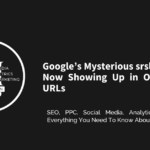In a recent episode of the “Search Off the Record” podcast, members of Google’s Search Relations team—Gary Illyes and Martin Splitt—shared insights into how Google handles various HTTP status codes. Their discussion clarified some common misconceptions among SEO professionals.
Key Takeaways
1xx Status Codes: Not Important for SEO
Google’s crawlers completely ignore all 1xx (informational) status codes, such as HTTP 103 “Early Hints.” While these may offer performance benefits for users, they have no impact on how Google processes or indexes pages. As Illyes explained, Google simply skips over them and pays attention only to the final response code.
Redirects: Keep It Simple
When it comes to redirects, Google focuses more on whether the redirect is permanent or temporary , rather than the specific numeric code (like 301 vs. 302). This means that while correct implementation still matters, the broader intent behind the redirect is more important than minor technical distinctions between redirect types.
4xx Client Errors: Handle Them Properly
Standard client error codes like 404 (Not Found) and 410 (Gone) are handled as expected by Google and play an important role in managing crawl behavior. The team also joked about 418 (“I’m a teapot”), a humorous, non-functional code introduced as an April Fools’ joke, which has no real impact on SEO.
Network Errors: Dig Deeper
Crawl errors labeled as network-related in Google Search Console often stem from issues below the HTTP layer—such as problems with TCP, UDP, or DNS. This means diagnosing such errors may require looking beyond HTTP status codes and into lower-level networking components.
What Wasn’t Covered But Still Matters
The conversation didn’t include several key status codes, including:
- 200 OK – the standard success response
- 5xx Server Errors – which can disrupt crawling and indexing
- 429 Too Many Requests – relevant for rate limiting These codes continue to be critical for technical SEO and site performance.
Practical Advice for SEOs
- Prioritize clarity in your use of permanent vs. temporary redirects.
- Avoid spending time optimizing 1xx responses for search engines.
- Investigate deeper networking layers when facing unexplained crawl errors.
- Continue using standard HTTP status codes correctly, even if they weren’t mentioned.
As web technologies evolve with protocols like HTTP/3 and QUIC, understanding how Google interprets these signals helps ensure your technical SEO strategy remains effective without unnecessary complexity.









